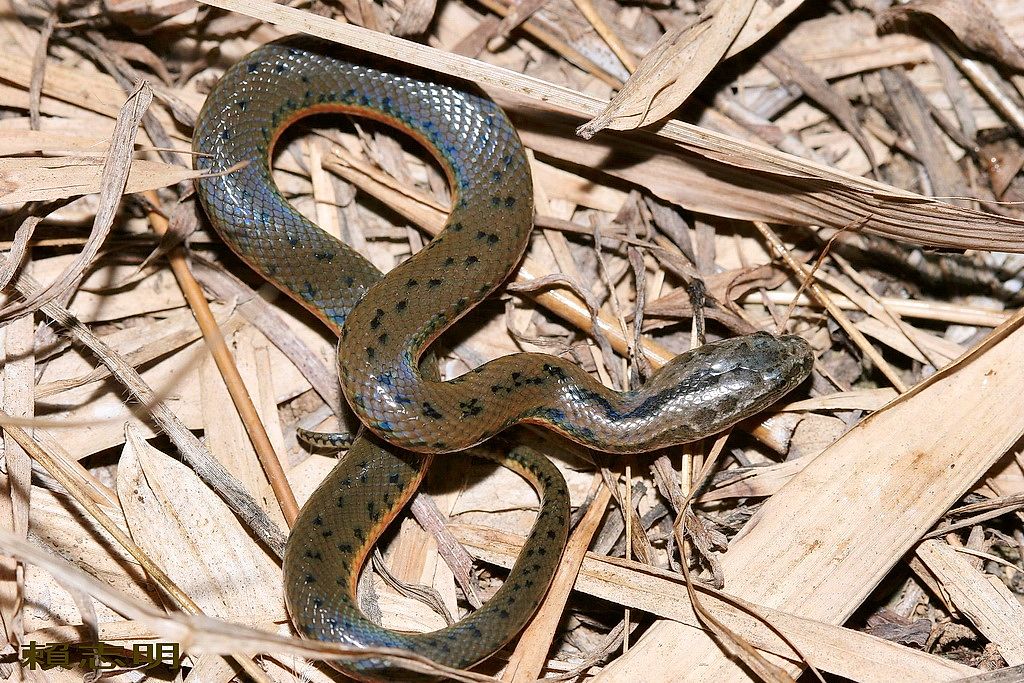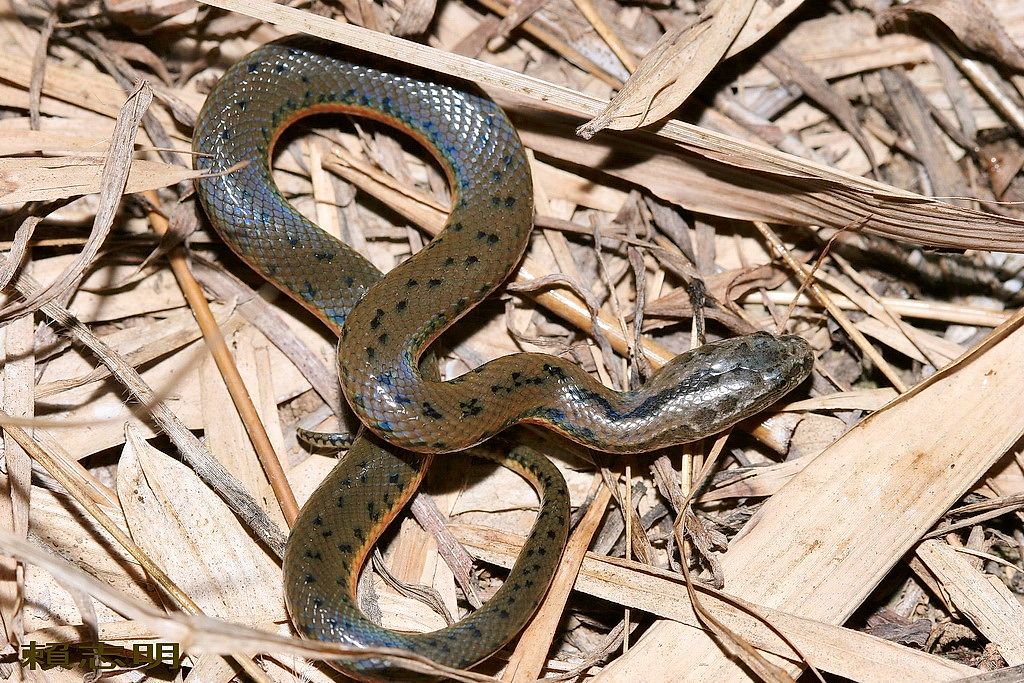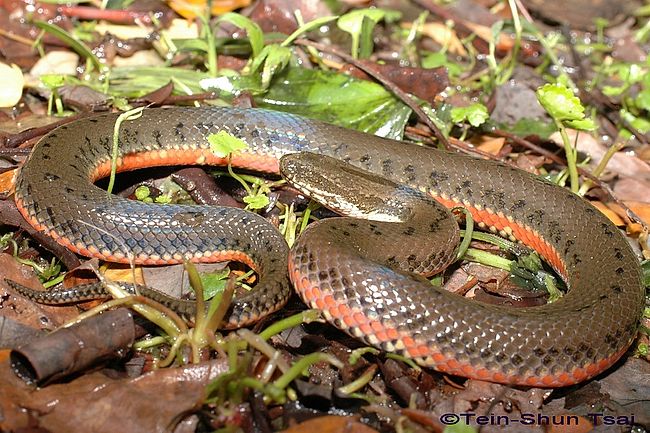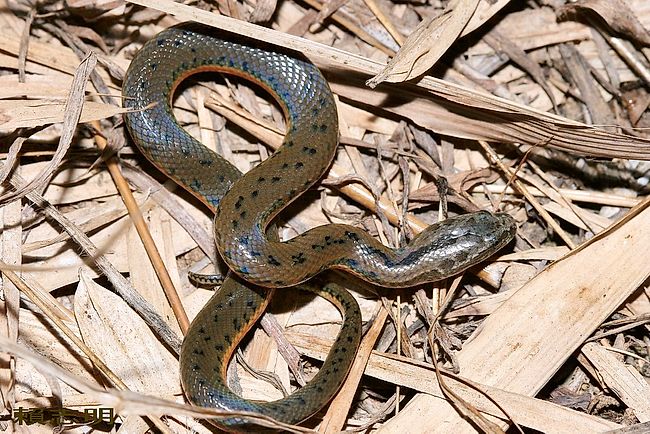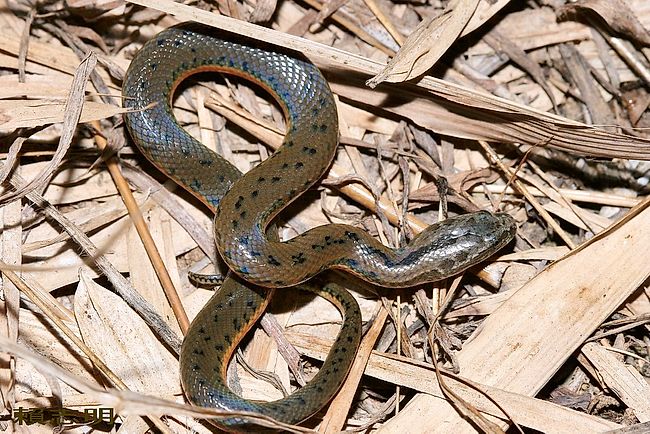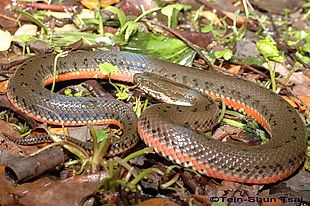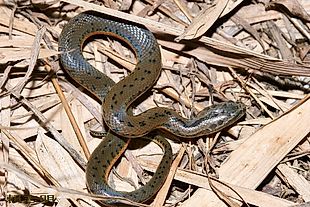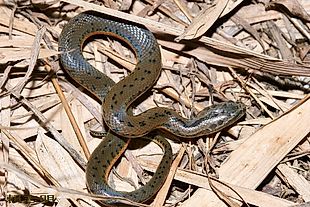Myrrophis chinensis
Chinese Water Snake
唐 水蛇 (tang2shui3she2)
Status: Protected (Category II)
Mildly venomous
Field Reports
Family
Elapidae, subfamily Homalopsinae
Max. length
80 cm
Occurrence in Taiwan
Originally up to 500 m altitude throughout Taiwan and Kinmen, but in recent years this species has only been recorded in Taipei, Taoyuan and on Kinmen. Endangered.
Global Distribution
South China (Hainan, Anhui, Fujian, Guangdong, Guangxi, Hunan, Hubei, Jiangxi, Jiangsu, Zhejiang), Taiwan, N. Vietnam
Description
Small snake; total length up to 80 cm. There are 17-25 (around 21 at mid-body) rows of smooth and very glossy scales. Head is broad, slightly triangular; body is short and stout, usually somewhat flattened; tail is short. Both nostrils (with a lid each) and eyes face upward. Eye is small, beady, and bulging; the iris is brown to dark gray brown, inconspicuous since it blends with color of upper head and the pupil is round, black, surrounded by brown ring. The tongue stem is red to flesh-colored with diffuse black pigments, fork tips gray to light gray. The nasals are not separated; there is only one internasal. Upper head is uniform gray brown to brown and the edge of mouth is dirty white or cream. Upper body and tail is gray brown to olive brown, with scattered spots of black pigment on dorsal and lateral surfaces where some spots align to form broken longitudinal lines and may turn into intact lines at head and neck. A longitudinal stripe, involving first to fourth scale rows, of dull yellow, orange, dark salmon or a combination of these, extends from head onto base of tail. Ventral head is dirty white to dark dirty yellow, darkened by diffuse black pigment. Ventral body is dirty white to dirty yellow, with anterior half to two-thirds of each scale pigmented to form prominent dark cross bands from neck to anus. Anal scale is divided and subcaudals are paired.
Biology & Ecology
Homalopsine snakes are usually considered a subfamily, the Homalopsinae, of the family Colubridae.
All of them have valvular nostrils combined with a mechanism for complete mouth closure, and a trachea
that can extend to the internal nostrils within the mouth, all of which facilitate their underwater lifestyle.
Most also have small eyes located close to the top of the head, enlarged rear maxillary teeth that are grooved
and other anatomical characteristics that suggest they all share a common ancestor. (Source)
Myrrophis chinensis is a crepuscular or nocturnal snake found in fresh water, such as ponds, rice paddies, and
ditches, but its habitat is not limited to those areas: E. chinensis is Taiwan's only colubrid that can also
thrive in brackish water, e.g. some of the ponds in Taipei County's Guandu Nature Park (關渡自然公園). Although
it spends almost all of its time in the water, it can be found on land after heavy rainfalls.
Fish and frogs are its staple foods. In August and September, females give birth to 3-21 young. When disturbed,
this snake has a tendency to submerge into soft mud. Its defensive behavior consists mostly of feigned strikes,
accompanied by lateral or vertical head jerks and quick vertical jumps. It may also launch a profuse flow of semi-fluid
feces with a very distinctive and pungent odor.
This is Taiwan's rarest opistoglyphous (= rear-fanged, see footnote (1)) species, and is mildly venomous.
While its venom is not fatal to humans, bites may lead to swelling, itching and/or allergic reactions.
In Chinese medicine, Myrrophis chinensis is the species most commonly used for the production of snake oil.
Etymology
Myrrophis is derived from the Greek word myrr, which means marsh and ophis, which means snake.
chinensis means "from China".
The Chinese name 唐水蛇 (tang2shui3she2) means "Chinese (唐) water snake (水蛇)".
Footnotes
(1) "Opisthoglyphous snakes are similar to aglyphous (fangless) snakes, but possess weak venom, which is injected by means of a pair of enlarged teeth at the back of the maxillae (upper jaw). These "fangs" typically point backwards rather than straight down, possess a groove which channels venom into the prey, and are located roughly halfway back in the mouth, which has led to the vernacular name of "rear-fanged snakes".
This species resembles Hypsiscopus plumbea, but H. plumbea has no black spots along the dorsal ridge (on the back)
Further Info

